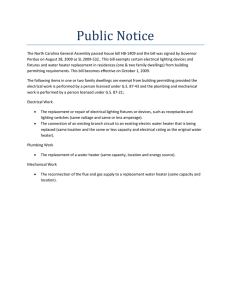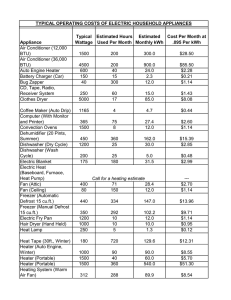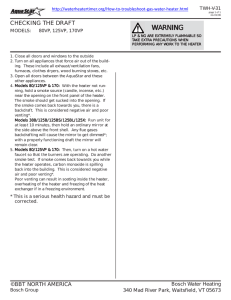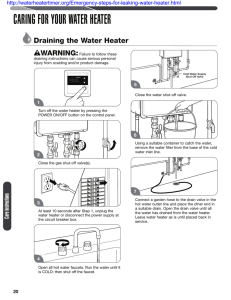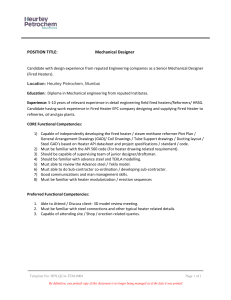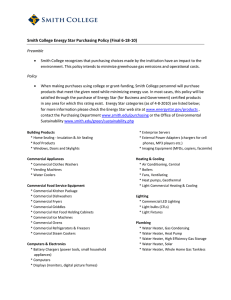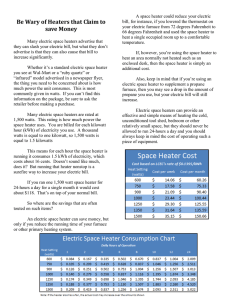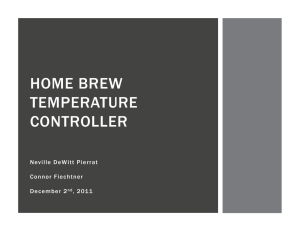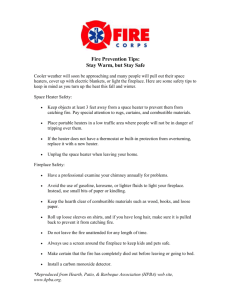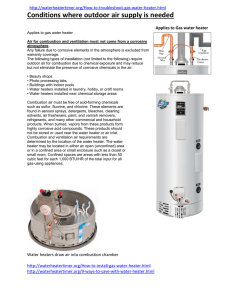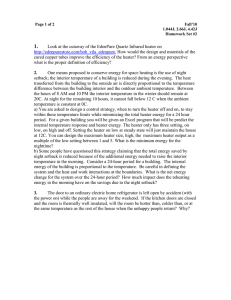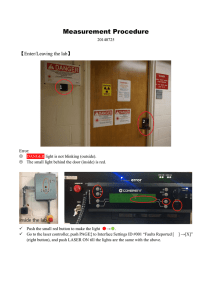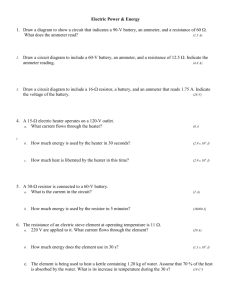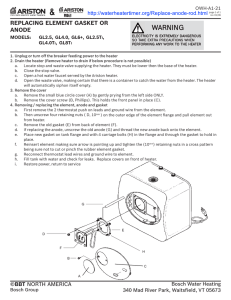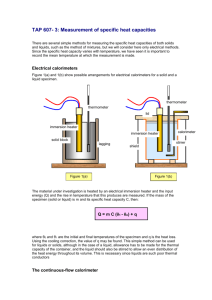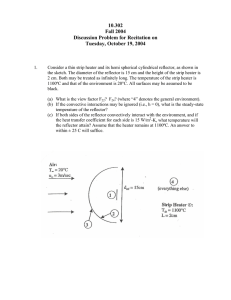hw2
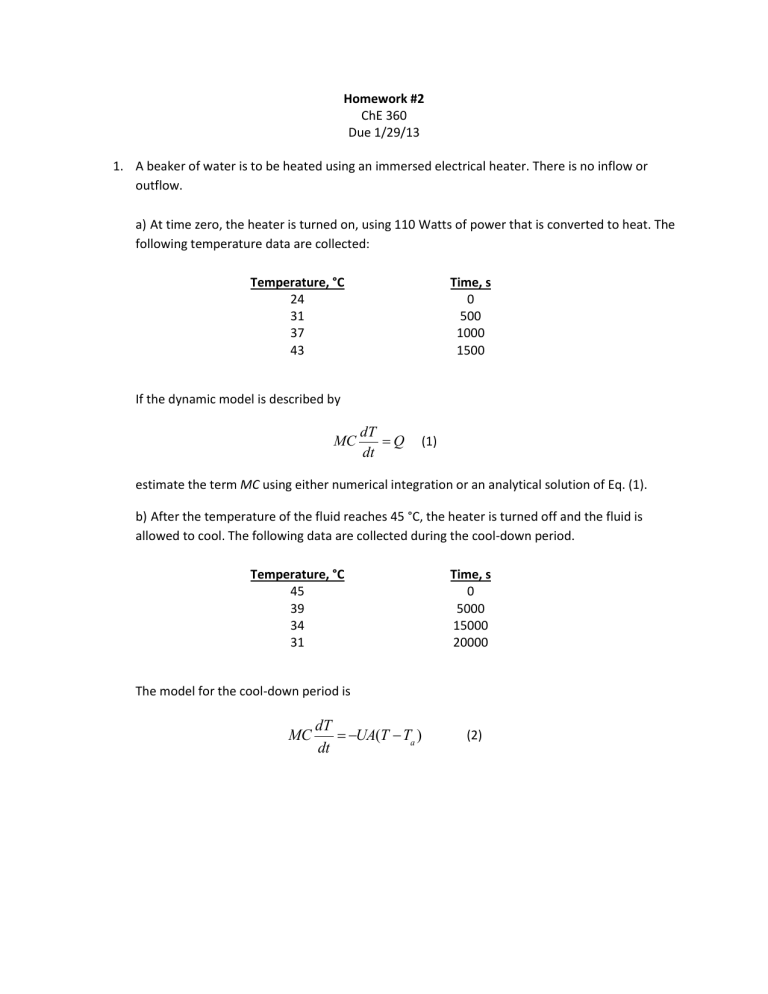
Homework #2
ChE 360
Due 1/29/13
1.
A beaker of water is to be heated using an immersed electrical heater. There is no inflow or outflow. a) At time zero, the heater is turned on, using 110 Watts of power that is converted to heat. The following temperature data are collected:
Temperature, °C
24
31
37
43
Time, s
0
500
1000
1500
If the dynamic model is described by
MC dT dt
Q (1) estimate the term MC using either numerical integration or an analytical solution of Eq. (1). b) After the temperature of the fluid reaches 45 °C, the heater is turned off and the fluid is allowed to cool. The following data are collected during the cool-down period.
Temperature, °C
45
39
34
31
Time, s
0
5000
15000
20000
The model for the cool-down period is
MC dT dt
= -
UA ( T
-
T a
) (2)
Using the estimated value of MC from part (a), estimate the parameter group UA based on the ambient temperature T a
25 C . Use numerical or analytical solutions to Eq. (2) to match the predicted value of T vs. the experimental data. c) Note that in part (a), the heat loss to the surroundings was ignored. Using the estimated value of UA in (b), modify the model in (a) to include heat loss. Then examine the error in the model with and without ambient heat loss and plot it as a function of time (0≤t≤1500). What do you conclude about the nature of the model?
2.
Slide 32 (Chapter 2) asserts that setting w s
0 will speed up the return to the tank temperature of 90°C. Calculate how long it takes for the temperature to reach 90°C using this cooling strategy.
3.
Show how the two first-order ODE’s on slide 31 can be combined into one second order ODE by eliminating T e
(show steps in the deviation).
4.
Solve problems 3.6 (a), (c), (d), and 3.9 (a), (b), (c).
